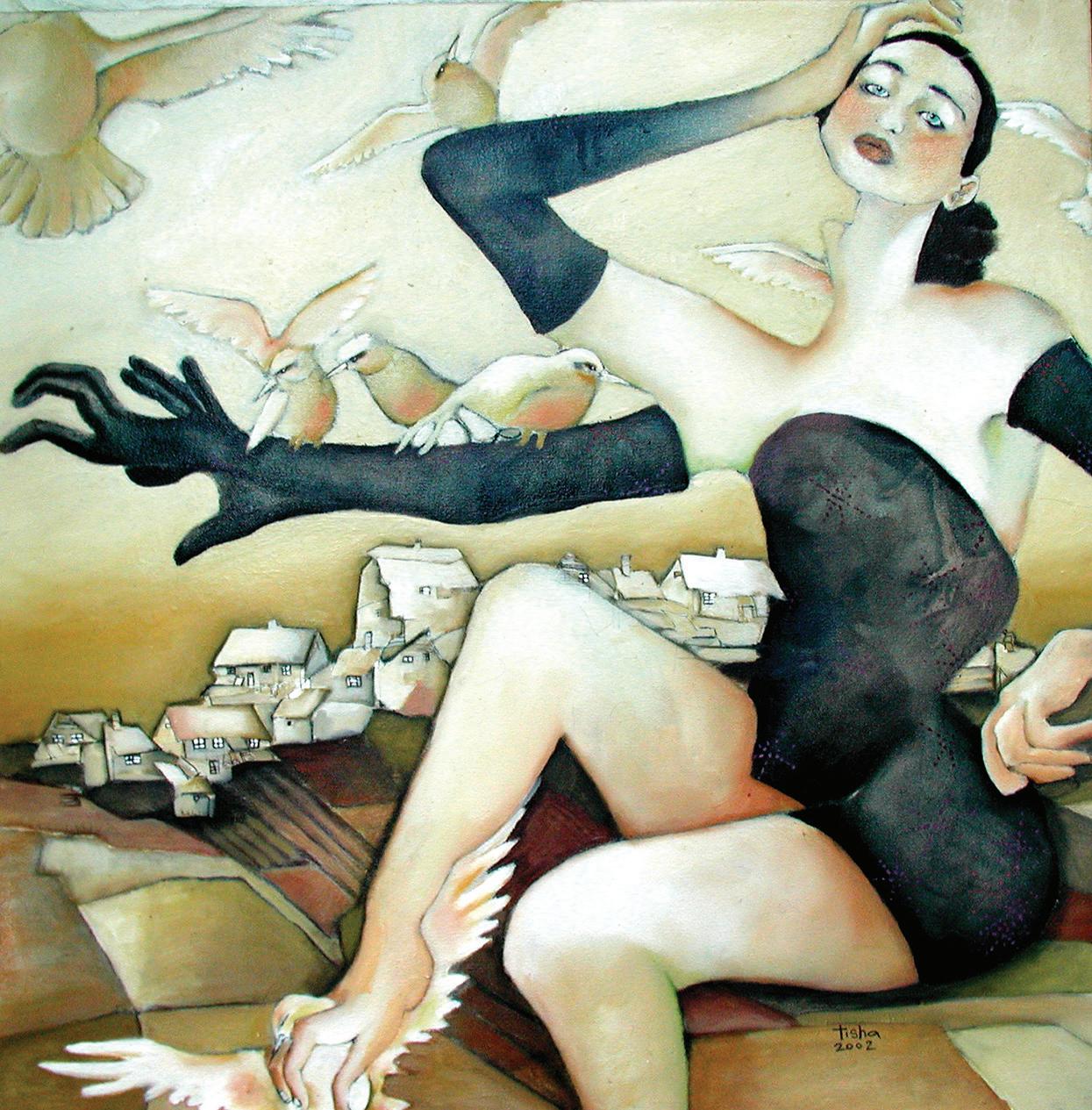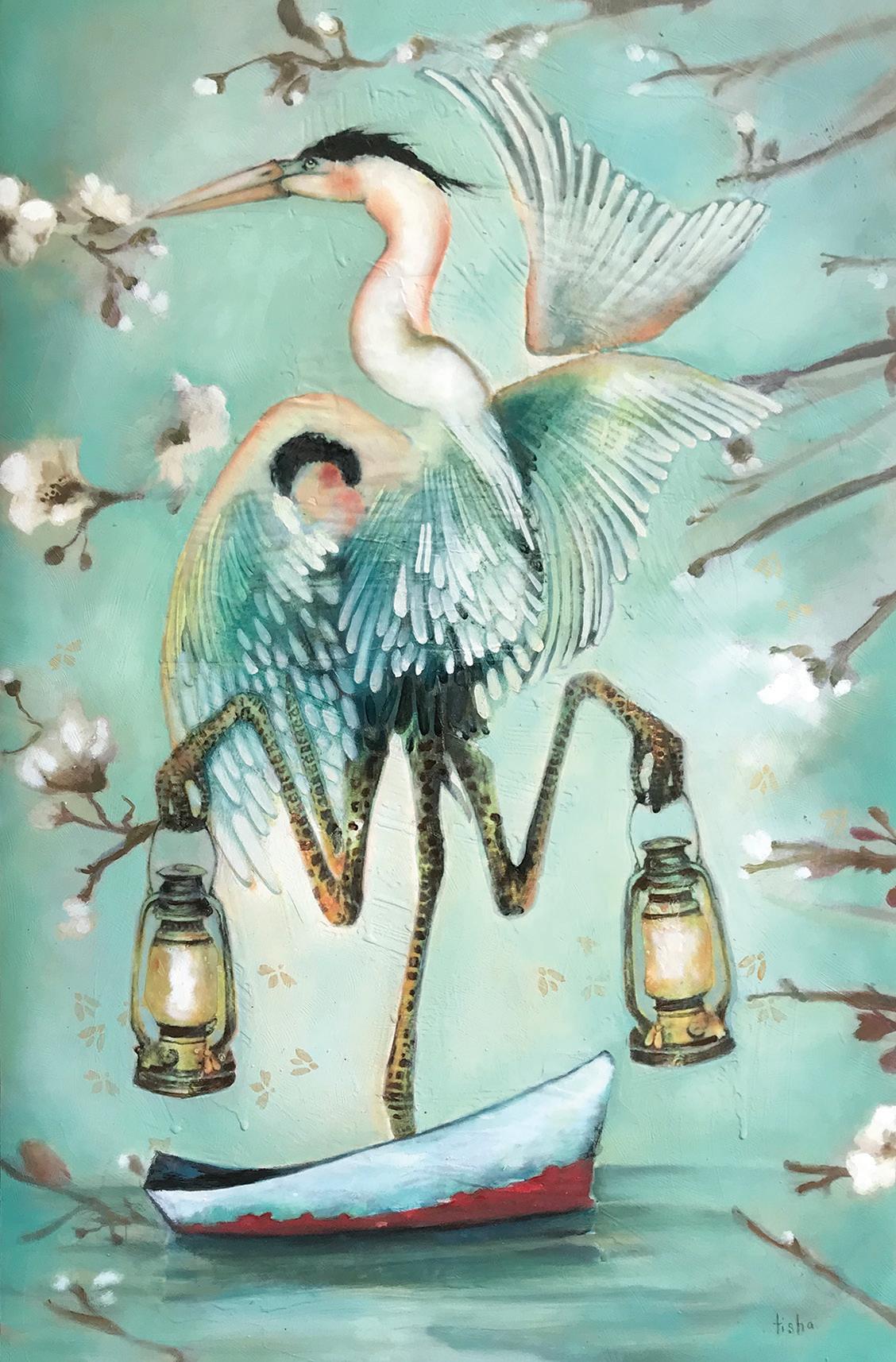d.r. glass this would be the first time she begins painting portraits of disturbed children. She works at the kitchen table with the lamp from her desk plugged into the outlet behind her chair. Towheaded boy on the threshold of a garden shed, his face half in shadow, hanging a litter of kittens by their necks from a roof beam. A calico struggles against his hand, the ridged pink roof of its mouth just visible above his thumb. She applies the color delicately, with plenty of water and her smallest flat brush, thinking dimly of a Beatrix Potter illustration. Twice she unthinkingly dips the paintbrush into her glass of orange juice. It doesn’t matter; paint is invisible in orange juice. By sunrise her wrists are ticking, clocking every hairline brushstroke. When she no longer needs the lamp, she stands, stretches, and takes the stairs two at a time, to her studio on the second floor.
34



